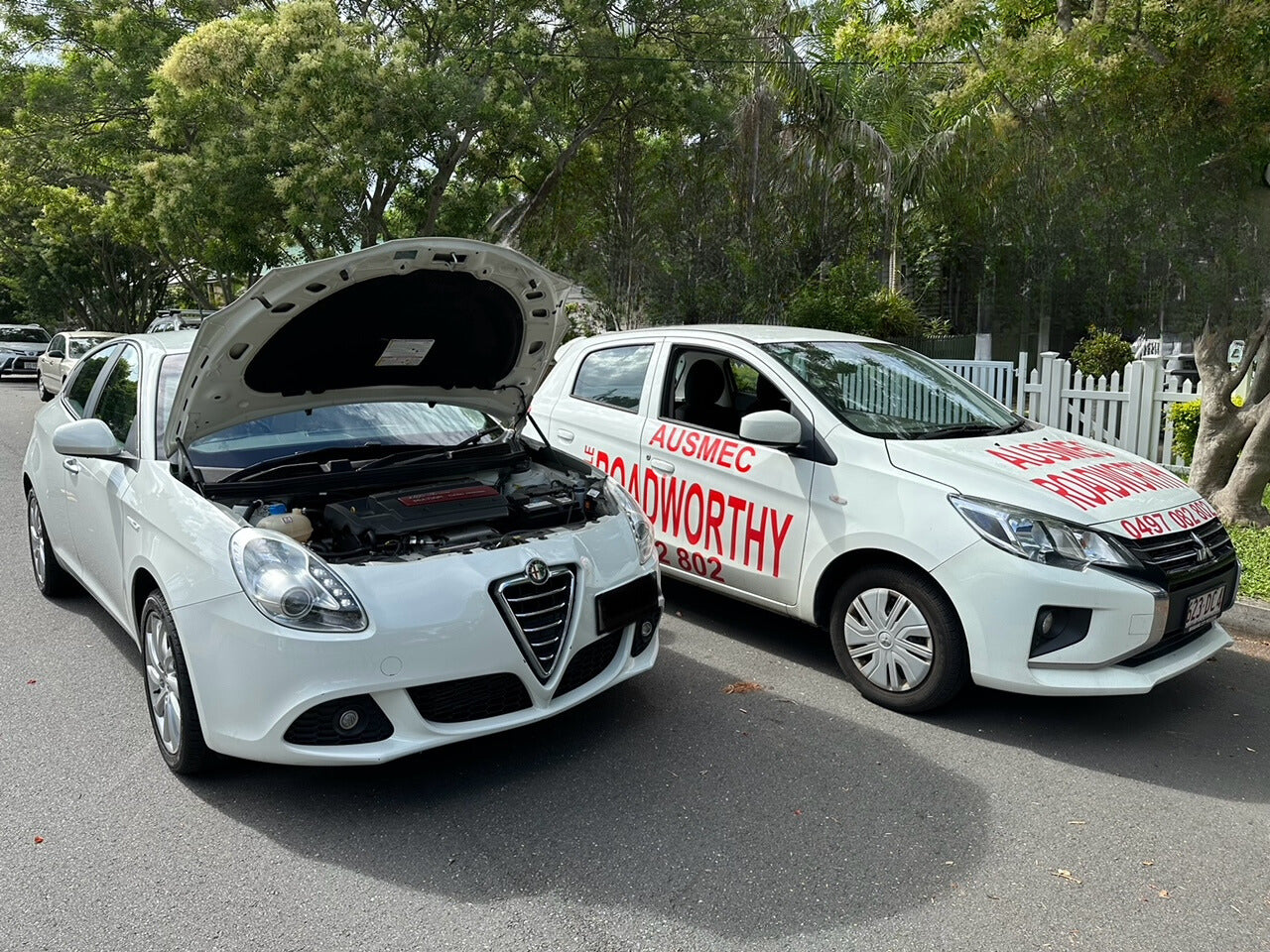Body, chassis and frame

Body, Chassis, and Frame: Ensuring Vehicle Integrity and Safety
The body, chassis, and frame form the core structure of a vehicle. During a roadworthy inspection, Ausmec examiners pay close attention to these elements, prioritizing three crucial safety aspects:
- Operator Safety: A strong and undamaged body structure protects the driver or rider in the event of a collision, minimizing injuries. Additionally, a properly aligned chassis ensures optimal vehicle handling and control.
- Public Safety for Occupants: A structurally sound body and frame safeguard passengers during an accident, reducing the risk of intrusion by debris.
- Environmental Impact: Excessive corrosion or damage to the body could lead to leaks of fluids like oil or coolant, potentially harming the environment. Examiners ensure the vehicle meets environmental safety standards.
By meticulously examining these areas, Ausmec examiners guarantee the body, chassis, and frame contribute to a safe driving experience for everyone and minimize environmental impact.
This rules can be found on pages 14 to 18 from the Queensland Light Vehicle Inspection Manual
Extra information on some RWC rules :
Background, Seats and Restraints, Lamps lights and Electrical, Windscreen, Body chassis and frame, Tow Couplings, Steering and Suspension, Wheels and Tyres, Brakes, Engine driveline and emissions, Vehicle safety Features, Vehicle Identification, Modifications, Road Test, Motorcycle RWC Standards,
Body, Chassis, and Frame: The Unseen Foundations of Vehicle Safety in Queensland
At Ausmec Mobile RWC & Mechanics, we understand that true vehicle safety begins with the integrity of its core structure: the body, chassis, and frame. Far beyond aesthetics, these elements form the very backbone of your vehicle, dictating its performance, occupant protection, and overall roadworthiness. During every Roadworthy Certificate (RWC) inspection in Queensland, our TMR-approved examiners meticulously assess these critical components, adhering strictly to the Queensland Light Vehicle Inspection Manual (QLVIM) and relevant Transport Operations (Road Use Management) Regulations.
Why a Strong Structure is Non-Negotiable for Your QLD Safety Certificate:
The QLVIM outlines precise standards for the structural integrity of all light vehicles, including cars, utes, wagons, motorcycles, and trailers (under 4,500kg ATM/GVM). Our comprehensive inspection focuses on several key areas, ensuring your vehicle meets and exceeds these vital safety benchmarks:
-
Structural Integrity & Damage Assessment:
- Rust and Corrosion: We rigorously inspect for rust, particularly in critical load-bearing areas like chassis rails, sub-frames, suspension mounting points, floor pans, and sills. Even seemingly minor surface rust can indicate deeper, compromising corrosion that severely weakens the vehicle's ability to absorb impact in a collision or withstand normal driving stresses. Hidden rust is a common failure point that our experienced examiners are trained to detect.
- Cracks, Fractures & Distortion: Any signs of cracking, fracturing, bending, or significant distortion in the chassis, frame, or structural body components are grounds for rejection. These indicate potential structural failure and severely compromise occupant safety.
- Impact Damage: Evidence of severe impact damage that has compromised the vehicle's structural integrity, chassis alignment, or the effective operation of doors, bonnets, or boots will lead to a defect. The vehicle's structure must be capable of providing the intended protection.
-
Unauthorised Modifications & Compliance:
- Chassis Alterations: Any modifications to the vehicle's chassis, such as wheelbase extensions, reductions, or alterations, must be legally compliant and certified by an Approved Person as per VSB6 (National Code of Practice for Light Vehicle Construction and Modification) guidelines. Uncertified or improperly performed chassis alterations are a significant RWC failure point.
- Body Alterations: Modifications to the body that affect structural integrity, visibility, or safety (e.g., sharp edges, non-compliant bull bars, modified mudguards, altered lighting brackets that impact body integrity) are thoroughly checked for adherence to QLD standards.
- Welding Quality: Any structural welding must meet Australian Standards (e.g., AS 1554.1) and be performed by a competent person. Poor welding quality on structural components is a critical safety hazard.
-
Component Security & General Condition:
- Secure Attachments: All body panels, doors, hatches, hinges, catches, bumper bars, and tow bars must be securely fitted, free from excessive movement, and operate correctly. Loose or damaged components can detach or impede safe vehicle operation.
- Floor Pan & Underbody: The floor pan and underbody must be free from holes (other than original design), excessive rust, or damage that could allow exhaust fumes or road debris into the cabin, or compromise the mounting of seats or other components.
- Protrusions & Sharp Edges: There must be no dangerous protrusions or sharp edges on the exterior or interior of the vehicle that could injure occupants or other road users.
- Compliance Plates: We verify the presence and integrity of all required identification plates and modification plates, ensuring they have not been altered, defaced, or removed without authorisation.
Ausmec's Commitment to Structural Safety:
Our mobile RWC inspectors are not just mechanics; they are specialists in QLD vehicle safety standards. We utilise our extensive trade qualifications and direct knowledge of the QLVIM to perform a rigorous, transparent inspection of your vehicle's fundamental structure. By meticulously examining the body, chassis, and frame, we ensure your vehicle not only passes its Roadworthy Certificate inspection but truly contributes to a safer driving environment for you and for all Queenslanders. Don't compromise on the foundation of your vehicle's safety – choose Ausmec for a compliant and comprehensive inspection.
Contact form
Ausmec Mobile RWC & Mechanics
Car, UTE, Wagon Roadworthy - Safety certificate (RWC inspection Brisbane North Side)
Share

